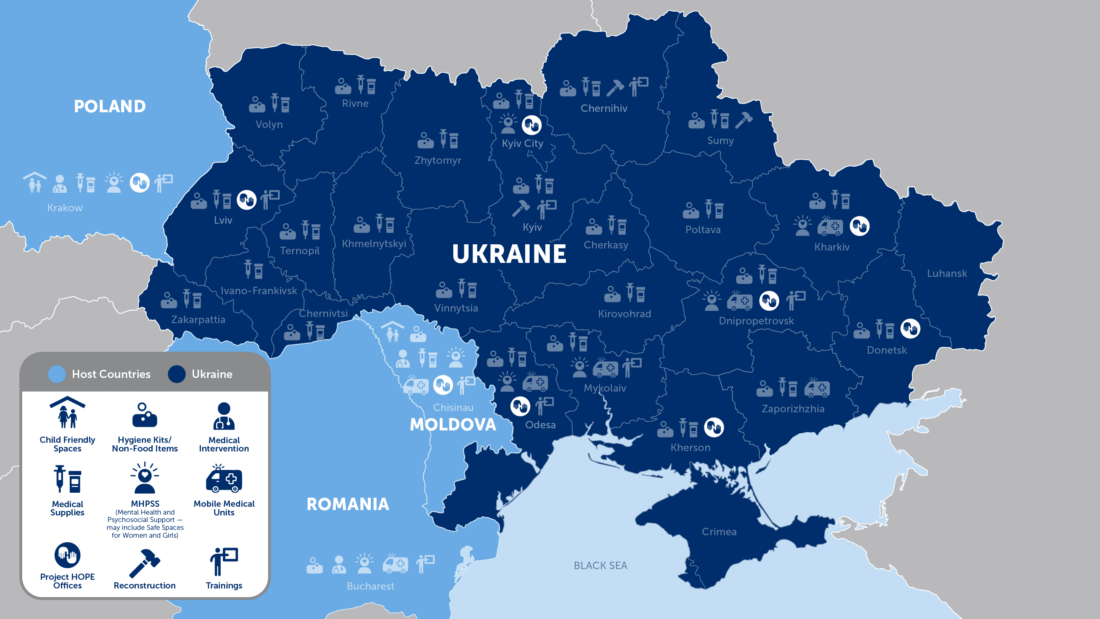Ukraine
Since March 2022, Project HOPE's team in Ukraine has been responding to the complex health and humanitarian needs brought on by Russia's invasion of Ukraine. Project HOPE's work in Ukraine began in the 2000's with a focus on HIV prevention, improving tuberculosis care, and strengthening the Ukrainian health system.
